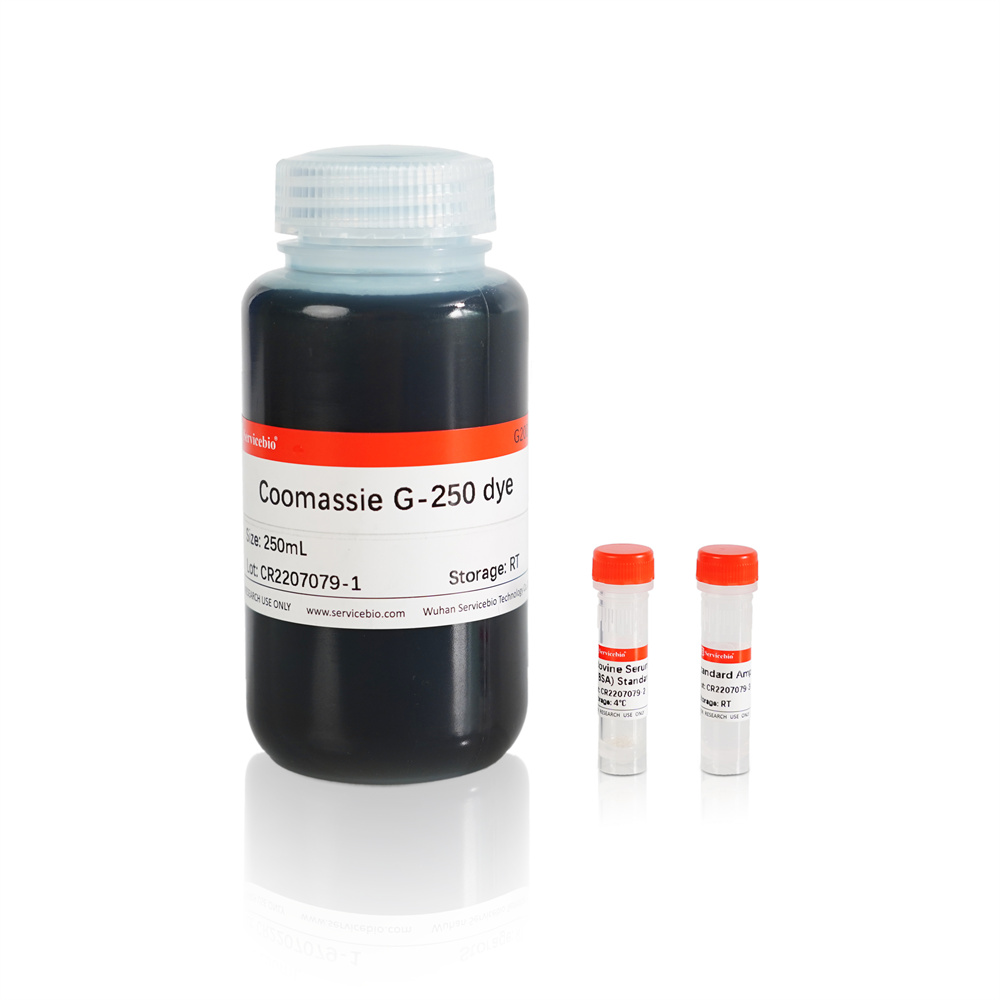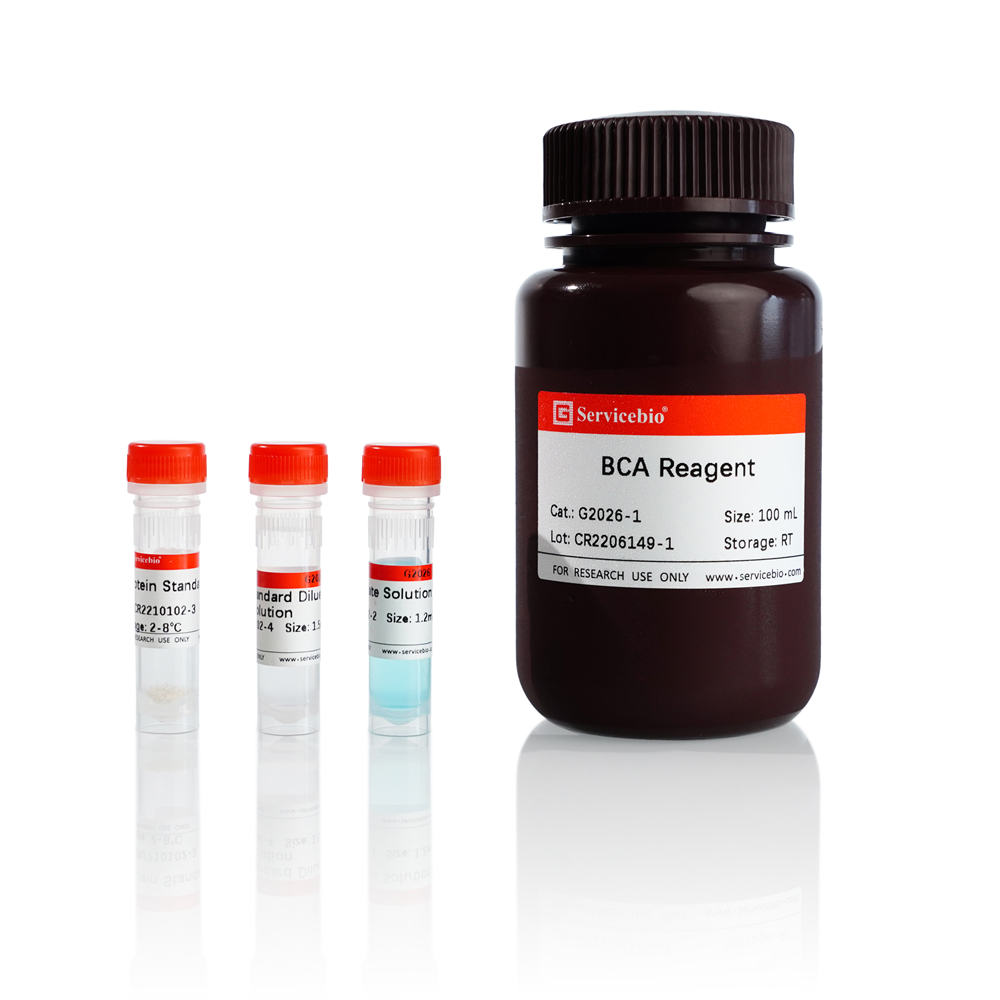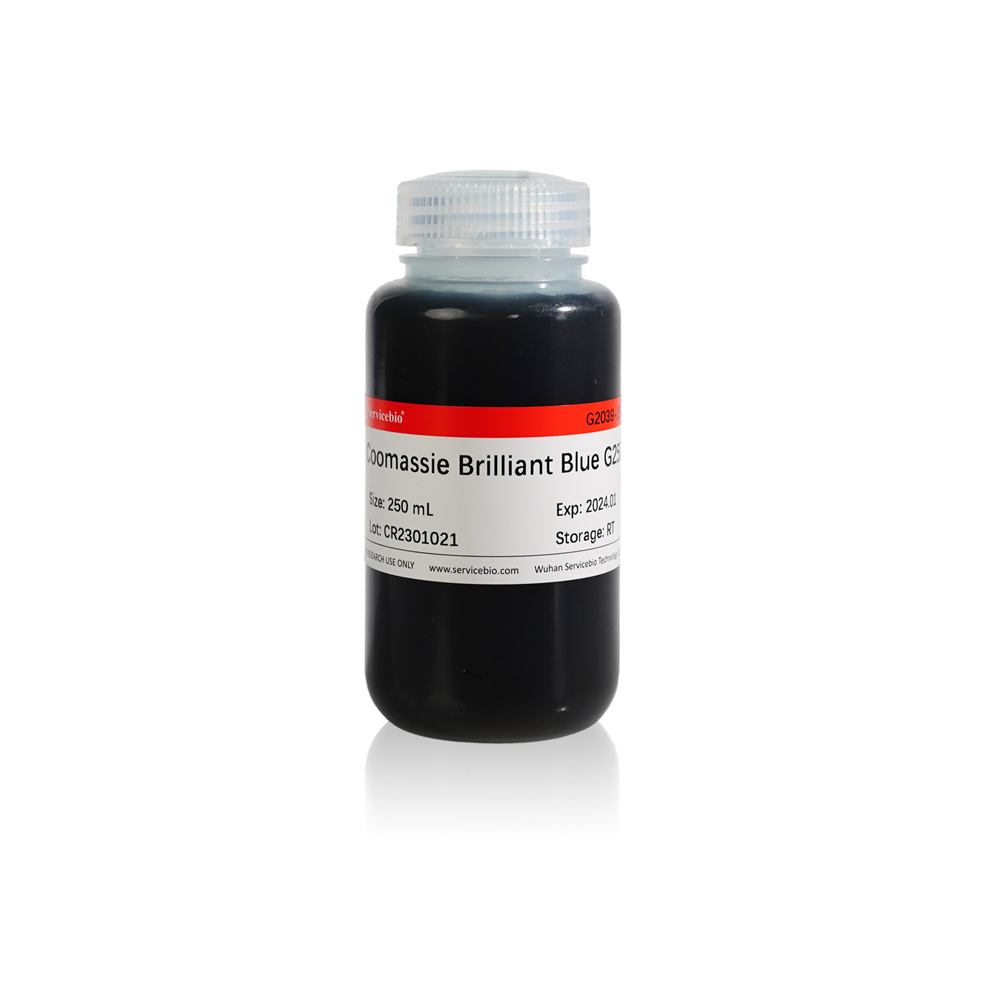Description
Product Information
| Product Name | Cat.No. | Spec. |
| Coomassie (Bradford) Protein Quantitative Assay Kit | G2001-250ML | 250 mL |
Description
The Coomassie (Bradford) Protein Quantitative Assay Kit is a quick and ready-to-use modification of the well-known Bradford coomassie-binding, colorimetric method for total protein quantitation. When coomassie dye binds protein in an acidic medium, an immediate shift in absorption maximum occurs from 465nm to 595nm with a concomitant color change from brown to blue.
Performing the assay in either test tube or microplate format is simple: combine a small amount of protein sample with the assay reagent, mix well, incubate briefly and measure the absorbance at 595nm. Protein concentrations are estimated by reference to absorbances obtained for a series of standard protein dilutions, which are assayed alongside the unknown samples. Because the color response with coomassie is non-linear with increasing protein concentration, a standard curve must be completed with each assay.
Storage and Handling Conditions
Product shipped at ambient temperature. Bovine Serum Albumin (BSA) Standard Ampules stored at 4℃, valid for 12 months. The protein standard solution, prepared with BSA Standard Ampules and Standard Ampules Dilution, stored at -20°C, valid for 12 months.
Component
| Component Number | Component | G2001-250ML |
| G2001-1 | Coomassie G-250 dye | 200 mL |
| G2001-2 | Bovine Serum Albumin (BSA) Standard Ampules | 25 mg |
| G2001-3 | Standard Ampules Dilution | 1.5 mL |
| Instruction Manual | 1 pc | |
Assay Protocol / Procedures
1. Preparation of Protein Standard Stock Solution: Dilute 25 mg Bovine Serum Albumin (BSA) Standard Ampules into 1 mL Standard Ampules Dilution; The concentration of Protein standard stock solution is 25 mg/mL, and it should be stored at -20℃.
2. Preparation of Protein Standard Working Solution: An appropriate amount of 25 mg/mL Protein Standard Stock Solution is diluted 50 times with PBS or normal saline to obtain a Protein Standard Working Solution with a final concentration of 0.5 mg/mL.
3. Preparation of the standard curve (microplate reader method): The protein standard working solution is added to 96-well plate at 0, 1, 2, 4, 8, 12, 16, 20 μL, and then PBS or normal saline is added to the same 96-well plate in turn at 20, 19, 18, 16, 12, 8, 4, 0 μL to make up the above gradient working solution to 20 μL. The protein concentrations of Gradient curves is 0, 25, 50, 100, 200, 300, 400, and 500 μg/mL.
4. Preparation of the sample: Dilute the sample to be tested appropriately (by pre-experimental detection, the protein concentration of the sample can be within the range of the standard curve to ensure the reliability of the test result). Add 20 μL of each sample to the in a 96-well plate. The sample to be tested and the protein standard are diluted with the same solution.
5. Test Tube Protocol:
a. Add200 μL of the Coomassie G-250 dye to each tube and mix well.
b. Incubate samples for 3-5 minutes at room temperature (RT).
c. Subtract the average 595nm measurement for the Blank replicates from the 595nm measurements of all other individual standard and unknown sample replicates.
d. Prepare a standard curve by plotting the average Blank-corrected 595nm measurement for each BSA standard vs. its concentration in µg/mL. Use the standard curve to determine the protein concentration of each unknown sample.
Note
1. Dye-dye and dye-protein aggregates tend to form in all coomassie-based reagents. If left undisturbed, the aggregates will become large enough over time to be visible. For example, when left overnight in a clear glass tube, the reagent forms dye-dye aggregates that are visible as a dark precipitate in the bottom of the tube with nearly colorless liquid above. Dye-dye aggregates can form over several hours in stored reagent while dye-protein-dye aggregates form more quickly. Fortunately, gentle mixing completely disperses the dye-dye aggregates. Therefore, it is good practice to mix the Coomassie Reagent before pipetting and to mix each tube or plate immediately before measuring absorbances.
2. Please wear lab coat and disposable gloves when operating.
For Research Use Only!
Ver. No.: V2.0-202104
|
Cat.No.
|
Product Name
|
Spec.
|
Operation
|
|---|
|
G2003-50T
|
SDS-PAGE Gel Preparation Kit
|
50 T
|
|
|
G2007-1ML
|
Phosphoprotease Inhibitor
|
1 mL×2
|
|
|
G2013-1ML
|
5× SDS-PAGE Loading Buffer (Reduced)
|
1 mL
|
|
|
G2020-50ML
|
Hypersensitive ECL Chemiluminescence Kit
|
25 mL×2
|
|
|
G2026-200T
|
BCA Protein Quantitative Detection Kit
|
200 T
|



